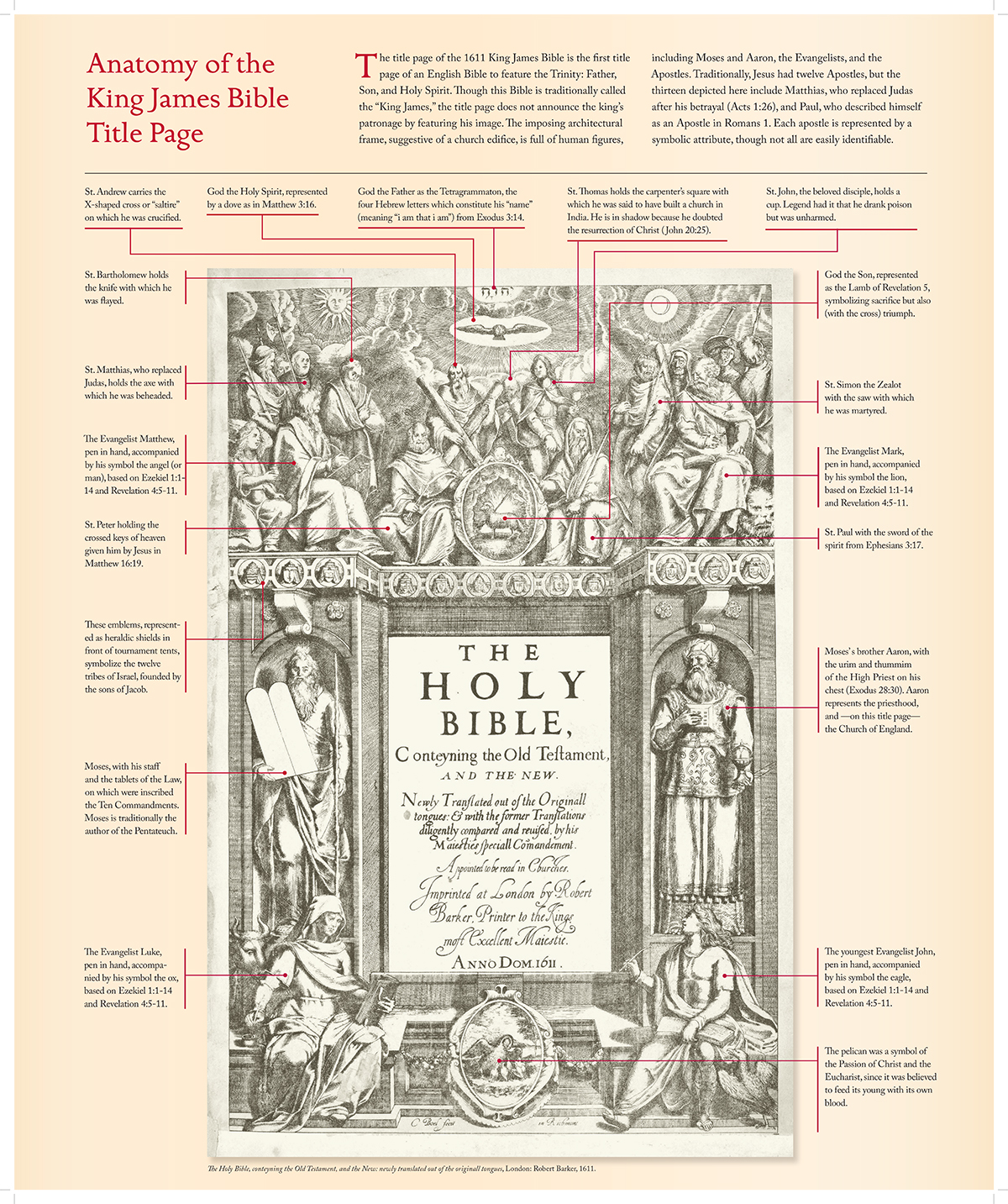
The title page of the 1611 King James Bible is the first title page of an English Bible to feature a depiction of the Trinity: Father, Son, and Holy Spirit. Though this Bible is traditionally called the “King James,” the title page does not announce the king’s patronage by featuring his image.
The imposing architectural frame, suggestive of a church edifice, is full of human figures, including Moses and Aaron, the Evangelists, and the Apostles. Traditionally, Jesus had twelve Apostles, but the thirteen depicted here include Matthias, who replaced Judas after his betrayal (Acts 1:26), and Paul, who described himself as an Apostle in Romans 1. Each apostle is represented by a symbolic attribute, though not all are easily identifiable.
The first edition’s title page and other materials pertaining to the King James Bible are on view in the exhibition The King James Bible: Its History and Influence through July 29.